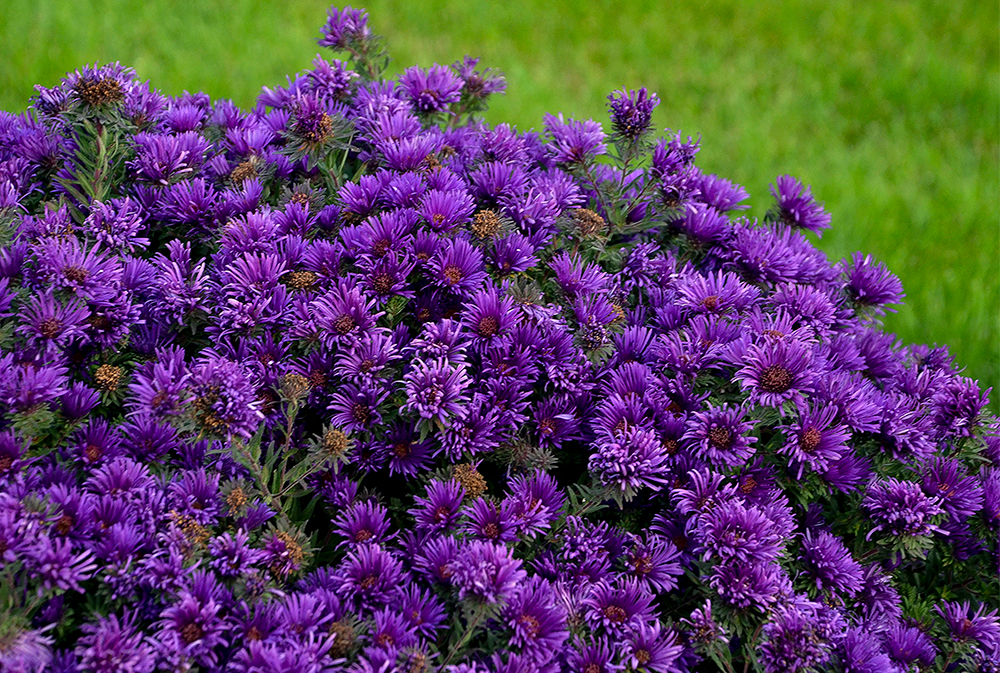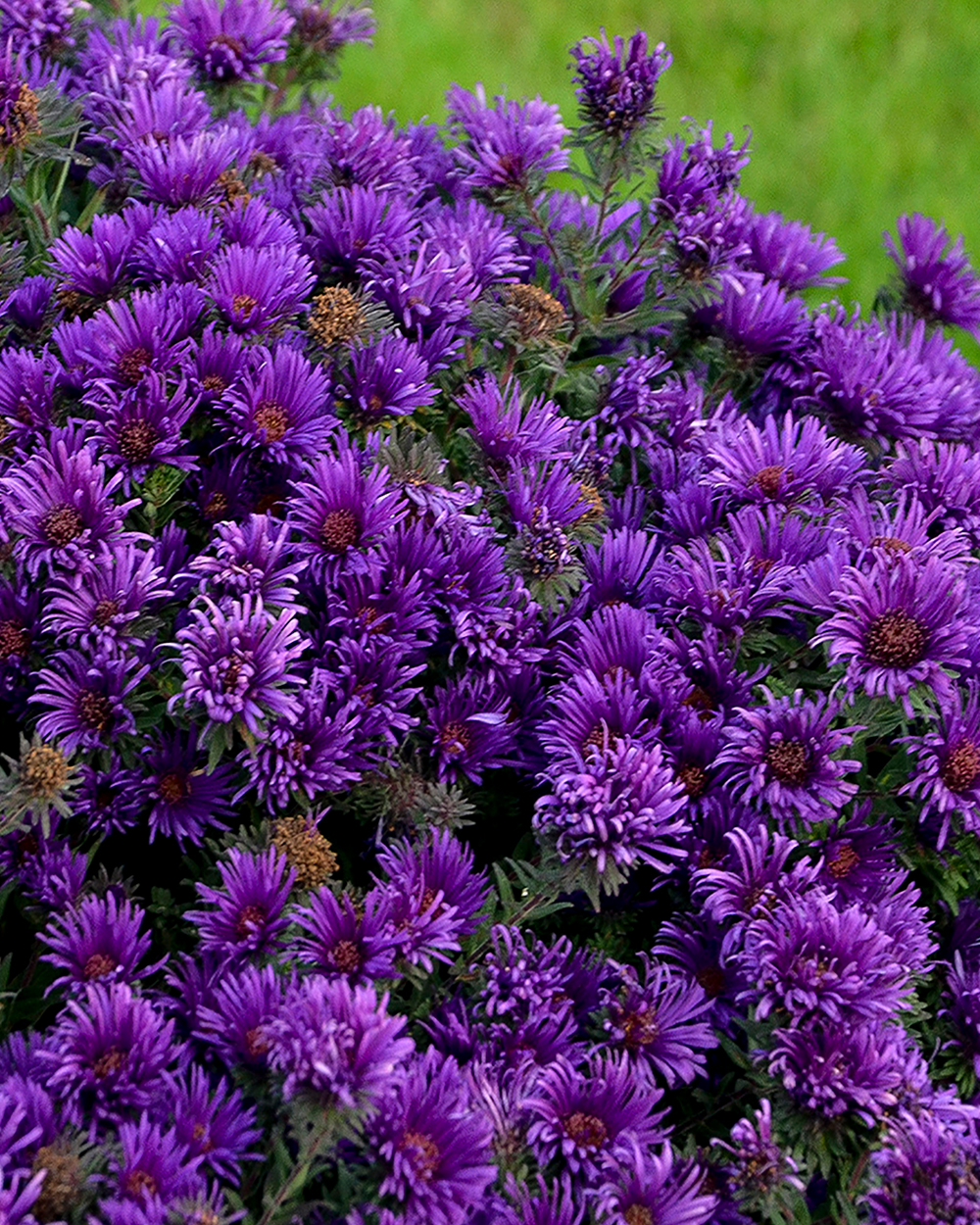Aster novae-angliae 'Grape Crush' PP33612
(Syn: Symphyotrichum)
Aster-New England
Aster novae-angliae 'Grape Crush' PP33612
(Syn: Symphyotrichum)
Aster-New England
This showy new aster becomes completely covered with brilliant purple flowers in the fall. Forms a dense, rounded mound of dark green foliage that doesnÕt split open and presents well in containers at retail. Native asters can handle alkaline soils and are an important late season food source for pollinators. Breeder: Walters Gardens, Inc.
Plant Details
- Zone: 3 - 8
- Height: 26-30
- Spread: 40-44
- Exposure: Full Sun
- Soil Moisture: High Water Needs, Moderate Water Needs
- Drought tolerant: Yes, Once Established
- Bloom time: Early Fall, Mid-Fall
- Foliage Color: Green Shades
- Flower Color: Purple Shades
- Fragrant: No
- Good Cut Flower: Yes
- Native: Nativar
- Deer resistant: Yes
- Rabbit resistant: No
- Bee-friendly: Yes
- Attracts butterflies: Yes
- Attracts hummingbirds: No
- Groundcover: No
- Roy Diblik Favorite: No
Plant Details
- Zone: 3 - 8
- Height: 26-30
- Spread: 40-44
- Exposure: Full Sun
- Soil Moisture: High Water Needs, Moderate Water Needs
- Drought tolerant: Yes, Once Established
- Bloom time: Early Fall, Mid-Fall
- Foliage Color: Green Shades
- Flower Color: Purple Shades
- Fragrant: No
- Good Cut Flower: Yes
- Native: Nativar
- Bee-friendly: Yes
- Deer resistant: Yes
- Rabbit resistant: No
- Attracts butterflies: Yes
- Attracts hummingbirds: No
- Groundcover: No
- Roy Diblik Favorite: No
Grower Information
Plant your Aster crop in spring for late summer and fall sales opportunities along with Rudbeckia, Eupatorium, Vernonia and fall grasses. Asters are heavy feeders, but it is best to discontinue feeding once they begin to bloom. Pinching is beneficial to promote lateral branching.
- PowerPlug Size(s): 32s
- Optimal Planting Time: Spring
- Retail Sales Window: Fall, Summer
- Moisture in Production: Average
- Requires Shade in Production: No
- Vernalization Required for Bloom: No
- Vernalization Beneficial: Yes


